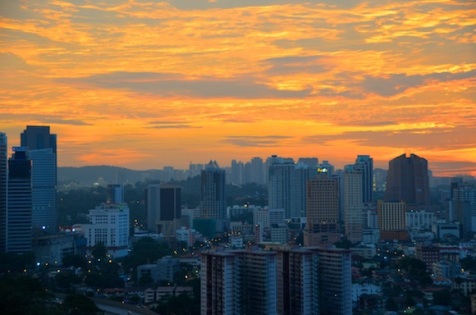
By Enrique Lescure
Introduction
The Earth Organisation for Sustainability is sometimes very hard to define as an organisation. We are aiming to engage ourselves in research, application of research and socio-ecological projects on local, regional and global levels.
Our end-goal is to help the Earth transition towards a sustainable civilization based on the foundations of the Three Criteria. The basis of our critique of our current system is how Fractional Reserve Banking is creating an addiction to exponential economic growth. We have also created a hypothesis for a post FRB-system called Energy Accounting, which you may read more about in the freely available book The Design.
However, even if you do agree with our goals, you may be skeptical of our ability to reach them.
What is our plan really?
This article will briefly summarize how we believe it should be done.
TL:DR summary
- Before implementing Energy Accounting, we will have to test it.
- We will apply a holonic model when we test our hypothesis, so that different groups will test different versions.
- This will be done within the framework of a network of holons – a proto-technate.
- A successful initiation of the proto-technate will be presented to the public as a step towards the future.
- A mass movement must be formed demanding a transition towards a realistic alternative to the current system.
- A compromise must be reached with the powers-that-be, but only on the condition that the three criteria are fulfilled.

adamappleseed.wordpress.com
How to test Energy Accounting?
There will be several different types of testing. The first and simplest model is computer simulations, which can simulate simple to complex socio-economic environments utilizing EA, as well as provide indicators on how well the system will perform under conditions of stress. There could also be arranged simulators were actual users are acting under an EA system.
No computer simulation, no matter how advanced it is, can however account for the complexity of the real world. Therefore, it is essential that aspects of EA are tested in real world-environments. This poses ethical and logistical challenges.
Ethical challenges
Since the tests will involve real human beings, it is essential that all participants are taking part of the experiment in a voluntary manner, are fully informed on what Energy Accounting is and what EOS have for aims with it. It also means that the EOS must cooperate on an equal and respectful basis with the participants, that the participants should have the opportunity to end the experiment, and that action plans must be produced to deal with harassment issues, labour rights issues and environmental issues.
Logistical challenges
Energy Accounting will, if ever implemented, represent one of the greatest changes in how the human being relates to the surrounding environment. Local environments behave different from the global economy, and performance rates will probably be artificially increased by the genuine enthusiasm of the participants (compare for example the voluntary Kibbutzes in Israel with the forcefully collectivized Kolkhoz system in the old USSR).
One of the greatest challenges, however, is the fact that we are going to test a system designed for usage on global scale on local scale. That means that there would need to be several types of tests, relating to various aspects of Energy Accounting. The Energy Survey for example could not easily be crammed into local experiments, but different types of Energy Survey systems could be tested through computer simulations.
The remainder of the Design can be differentiated into several aspects, namely Energy Units, types of distribution, the incentivization issue, the bottleneck issue and the time factor issue, as well as other aspects which we have not thought of but which will appear from beneath the surface when the first experiment results are coming in.

The Holonic way of solving things
Dr Andrew Wallace therefore suggested that the best model for testing the hypothesis of Energy Accounting would be to run several tests simultaneously. This would necessitate that various different groups test the model in different parts of the world. Many of the groups, if not most, will fail to reach satisfactory results – and that is good, since it will pinpoint us towards problems with The Design. Those groups which are successful will see their methodologies be copied and applied throughout the wider network.
Practically speaking, the different groups will organise actual production, of energy, food, small-scale industry and large-scale industry, using environmentally friendly technologies to achieve their aims.
After that point, the groups can interconnect with one another, forming larger holons coordinating certain of their features, yet again in an organic, voluntary manner. That means that for example a solar power plant holon may provide electricity to a group of biodomes cheaper than the market, and in return receive back food to offset the cost for staff meals.
While still a long way towards Energy Accounting, that is a step in the right direction. Not all holons may test Energy Accounting either, some may instead aim to test Time Factor Economics or Labor credits. The important thing is that all experiments aim to achieve the goals stated by the three criteria.

The Proto-technate
The Proto-technate is simply the network of holons operating within the wider project.
In order for this system to be able to operate, it must during the first few years be operating entirely within the context of Capitalism, in order to garner revenue that can be invested into the first core holons. That also means that the ethical and ideological guidelines, as well as the structure of the early proto-technate, must be designed to take into account that there is a risk that the project can forget its aims.
Even at the medium time prospect, the proto-technate will be dependent on items produced within the current system. The interaction at that point will be conducted by specialised holons known as Interface Companies, which will be responsible for transacting capital and administering certain trade operations.
If external organisations want to join the proto-technate, they would be welcome to do so as long as they fulfill basic human rights and either fulfill or aim to fulfill the three criteria.
The goal is that as many things as possible which today are produced outside of the proto-technate should be produced inside, which would improve on our ability to test Energy Accounting.

The next step is in the hands of the people
The next logical step – following the development of a successful alternative socio-economic system – is that we should communicate it with the public and show them an alternative to the more and more collapsing Debt-based Monetary System.
At that point, political alternative should coalesce, and we should make sure to present our results to these alternatives and uphold an open communication with all parties within the global opposition, provided they are upholding basic human rights and the three criteria.
We will not need all 7-9 billion people of the future to have a transformation. We will “just” need 700-900 million people. That is why we must improve our ability to communicate through social media and to build a vast contact network of activists and practivists, aiming to demand a transition towards a sustainable system. This movement has to comprise the poor and the middle class, people from the first world and the developing world, first nations-organisations, women’s rights organisations, progressive religious groups, secularists and climate activists.

Last step: Reaching a consensus with the establishment
The last step of an initial transition towards a world fulfilling the Three Criteria is to establish communication with the elites. Ultimately, the global elite are people too. This means that they have an interest in a world that is sustainable for their children too. While a lot of their powers and privileges are tied up to the current system, the system is gradually self-destroying at the same time as it is destroying the planet, with a mountain of debt growing every second. There is literally no money on Earth which will not be engulfed by debt, which means that even according to the logic of the current system, we are all functionally bankcrupt.
EOS is not a revolutionary political party, but an applied research group aiming to protect life on Earth. That means that we have a duty to communicate with everyone and try to reach a consensus. The consensus however must be rooted in a future where we can safeguard the three criteria, which is impossible by having Fractional Reserve Banking running rampant on Earth.
That is why it is essential to – when there is a realistic alternative system ready to be implemented and a mass movement advocating it – to negotiate about the future of this our Earth. Most likely, the end result will be a hybrid system, holding traits of both the old and new systems. That does not mean that our side should not make its outmost to try to win as many concessions as possible, but within a framework of a civilized compromise.
Throwing the Earth into more chaos will be the last thing we would want for the future.

Future city, by Alain Descamps
In the really long perspective
We should follow our hearts, and aim to begin the transition towards a future sustainable civilization. But we must do so with cool heads and in a realistic manner. I know that the situation is perilous, and it grows ever more perilous every day. But that is no reason for panic, but rather to become even cooler and more level-headed.
Even if the end-result is just a hybrid system, that is not problematic. As long as it solves the problems with the unsustainability of the current global socio-economic system, fulfills the three criteria, as well as begins restoring the Earth’s biosphere, we should be able to live with it.
Especially as there are no end-results. No system is ever static. If we have established a hybrid system by the year 2050-2060, it can be gradually turned into a form of full Energy Accounting by the year 2150-2160, and from that towards an Abundance System where costs have shrunk so low and efficiency increased so much that everything produced is virtually free by 2250-2260.
And it can happen even faster.
For this to happen, we need you however.
Our new website will soon be launched. That will mark a new beginning for the EOS. We have a new Board of Directors, elected this May 2015, and it is time that you soon will meet them. We have many on-going operations. We have a growing presence on Facebook. We have a vibrant group in Umea, Sweden.
Join our Facebook group here.
Like our page here.


















